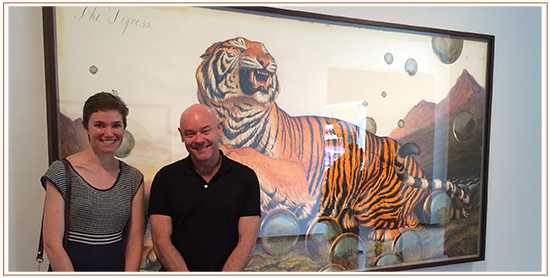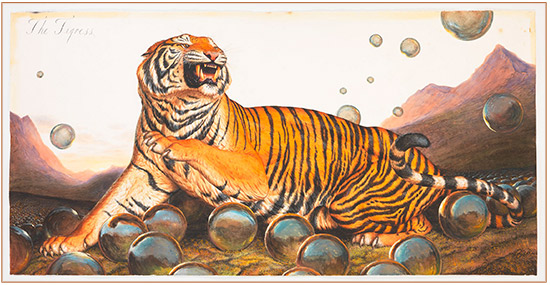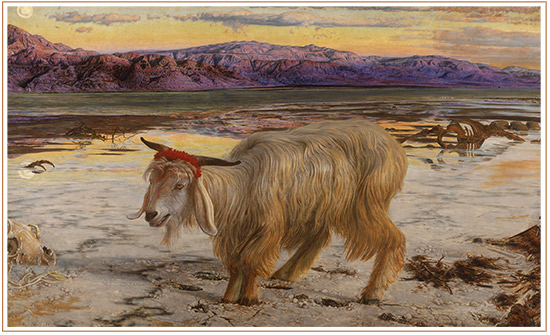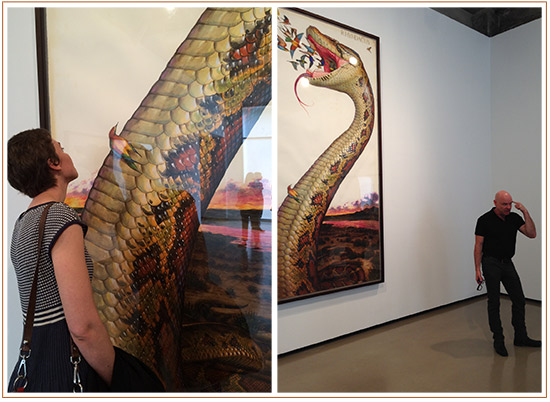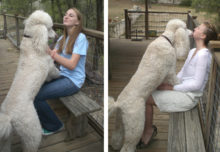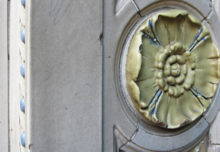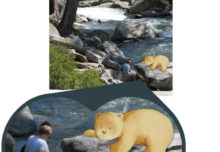By the kind of serendipity that seemed a credit to New York, we walked into Paul Kasmin Gallery to see Walton Ford’s current show just as he started an artist talk. Standing in front of Tigress, one of three large-scale watercolors that fill the first gallery space, he began with a bit of his own history—how his naturalist, narrative watercolors have evolved over time, and critical thoughts on narrative art in general.
Over the past twenty years, Ford has developed a clear artistic voice by firmly rooting his practice in the well-established canon of natural history illustration and narrative allegory, while also stepping just outside the conventional etiquette of those genres. In the beginning, he said, the process was more formulaic: “take a natural history illustration and subvert it.” Ford tweaks images that we are prepared to see as simply specimens, physically–through scale, and conceptually–through depictions of violence, debauchery, and the juxtaposition of objects and animals that are not usually found in the same picture plane.
But there is more to these works than a mustache on the Mona Lisa. Ford’s compositions are also well-researched. He puts himself into narratives unearthed from medieval bestiaries and arcane fables and permeates his carefully-constructed compositions with the immersive empathy of a method actor. As he is telling us the story behind Tigress, a scene imagined from a Persian manual on kidnapping cubs, my own mother tears up as he describes how the mother tiger is continuously halted in her pursuit. The poachers are instructed to throw glass orbs behind them as they race away on horseback, each one reflecting the mother’s image and confusing her into thinking she sees her babies, until she is lost in an overwhelming accumulation of glass and her own reflections.
On an entirely gossipy note: Vogue claims that Leonardo DiCaprio might have been the purchaser of this particular piece. And for an even juicier article, the WSJ delivers on anecdotes about the artist—though there’s not too much about his art.
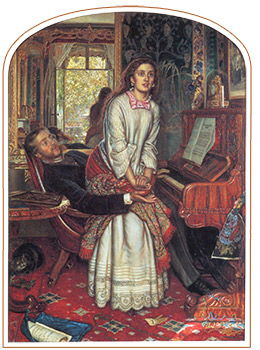
Ford then went on to talk more critically about narrative art, specifically about keeping interpretations open. He used two paintings by Pre-Raphaelite William Holman Hunt as examples of stepping on either side of the very thin line between good and bad narrative.
The Awakening Conscience, Ford compared to Norman Rockwell paintings, condemning both for closing all but one door to viewer interpretation. On the other hand, he pointed out that The Scapegoat, by the very same artist, is a masterpiece for communicating emotion, but allowing for endless possibilities when it comes to narrative. Hearing both this and Ford’s own–the real–narrative behind the Tigress, I felt a new appreciation for the piece.
Originally, I had thought the crystal balls were stones, or perhaps cannon balls, and even though I wish, knowing the story, they had been painted with reflections and a real sense of light-refracting glass, I think the strength of the piece rests in Ford’s intimacy with his version of the story. It allows him to portray all the details that mysteriously translate an emotion while leaving doors open for the rest of us.
Another strong ten-foot watercolor in the show was Rhyndacus. This elegantly-composed, satisfyingly enormous, apparently autobiographical allegory was also just plain gorgeous. The press release tells the story behind this one. Here’s a photo of the artist and his work for scale:
And the admirer inspecting the details for more scale:
Admittedly, even though I had read the measurements in Taschen’s monograph of Walton Ford, Pancha Tantra (which was my Christmas present this year and is an excellent art book), the scale took me by surprise. It was impressive—especially from far away. Even better, it is also not just size for the sake of size: Ford’s works are often large because his animals are rendered at a scale of 1:1. The enormous snake by the Rhyndacus river was a 60-foot legend, and tigers and elephants and bears are all huge.
I was glad to be able to see for the first time both the artist and his work. After fantasizing over his book for the last six months, it was a thrill to see the larger-than-life life-sized.
4 Comments
-
Ellen: What a fine writer you have become. The opening sentence beckons the reader to read the entire piece. I felt as if I were there from the moment my eyes made sense of the letter forms. What a great experience the lecture must have been. Keep writing.
-
Ellen, such a fabulously written and interesting piece. Oh, how I would love to see his work up close…amazing! Like your mom, I too teared up when reading the reality of the glass globes in the Tigress. Excellent writing, Ellen!
-
Doug and Barb,
Thank you so much for your kind comments! You make me want to visit more galleries and write more about art. :)
Thank you for reading and being so supportive.
e -
Oh, my, Ellen! Wonderful piece–now I want to see more! Thanks, kiddo!


